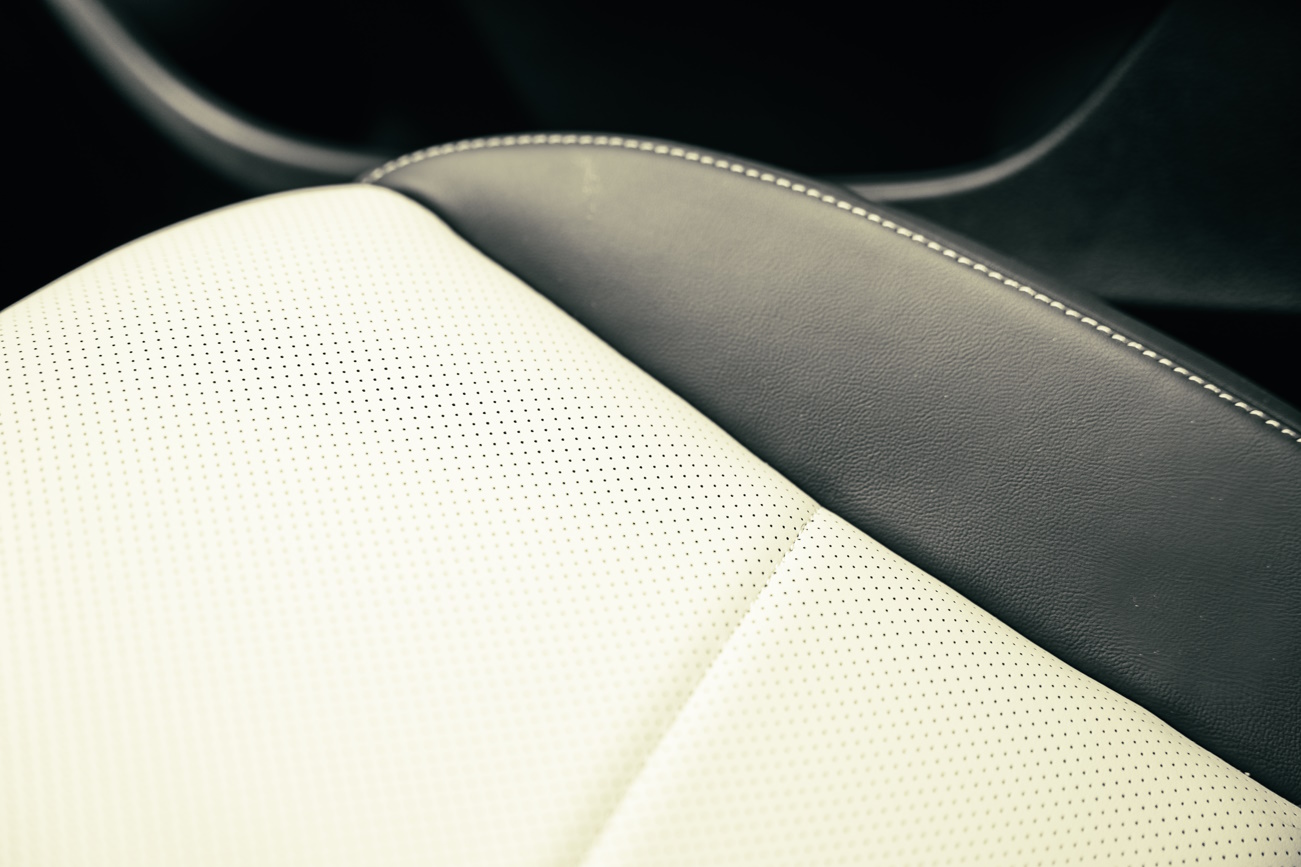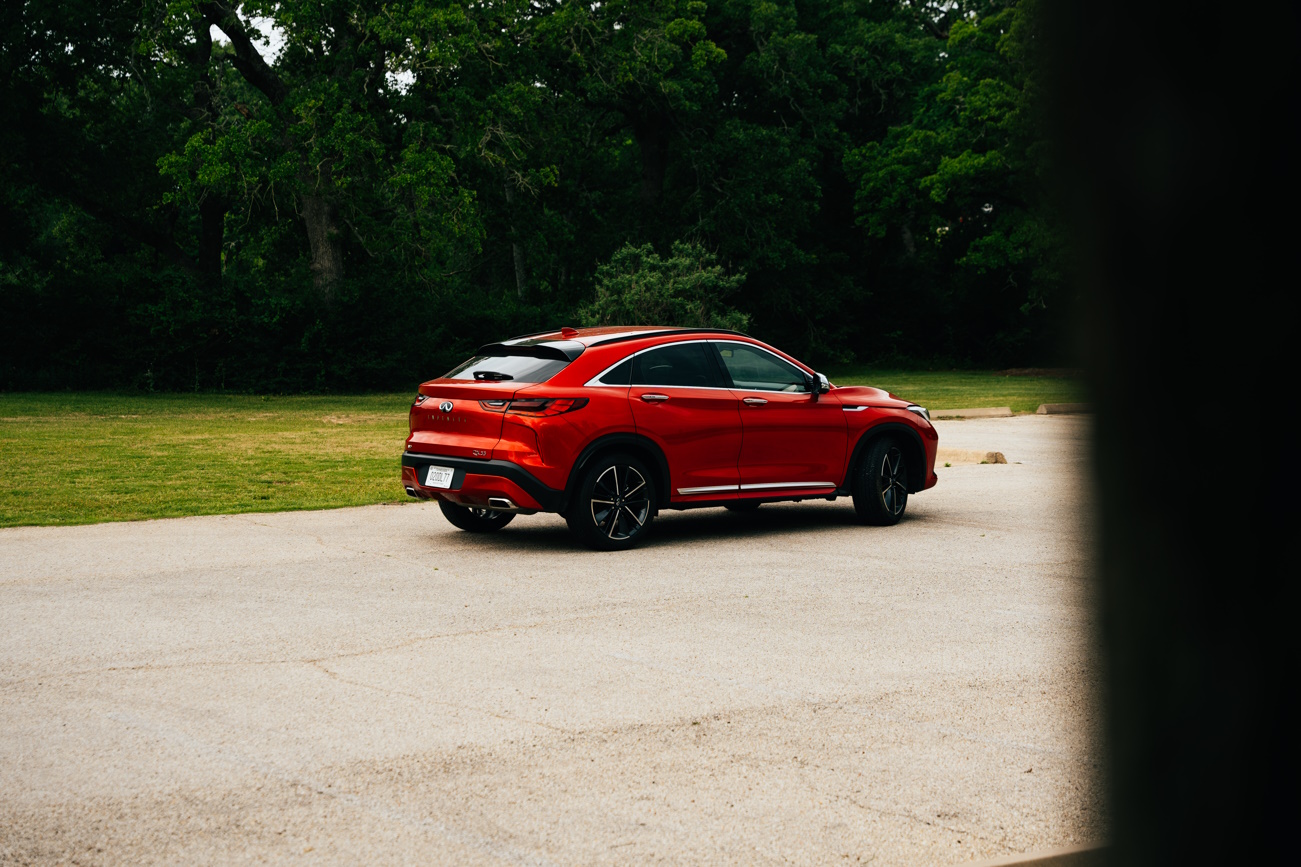by Michael Satterfield - Photos by Lucus Kepner - 04/21/2024
I have not reviewed an Infiniti for a long time, since 2019 to be exact, when I tested the QX50. The QX55, which I am reviewing now, is based on the QX50 but is designed to have a sportier coupe crossover look. However, it has less cargo space and headroom than the QX50. The QX55 competes with models like the BMW X4 and the Mercedes-Benz GLC-Class Coupe, which are also sporty SUVs.
The QX55 starts at $50,000, which isn't a high price point in the premium space, but Infiniti has not done a great job of marketing the QX55, and it faces tough competition from other luxury brands. The youth in our office had never heard of the QX55, and they were not familiar with the Infiniti brand, which has 16 dealers in Texas, compared to Land Rover which has just 15 dealers but far better brand recognition.
The QX55 has some weak points for a car that ranges from $50,000 to $60,000, depending on options. Infiniti has some major competition in the premium space, and in a segment that values luxury, technology, and performance, it needs to step up its game.
The 2024 QX55 range has received some minor updates, including new color combinations, optional chrome 20-inch wheels, a revised center console with wireless charging, and a new shift knob. A few added safety features have been included, such as mirrors that automatically tilt downward during reverse and rear-door alert.
The QX55 comes in three trim levels, and my test vehicle is the top-of-the-line Sensory model, which includes heated and ventilated front seats, heated rear seats, 20-inch wheels, and a premium Bose audio system. The QX55 has all the luxury features one would expect, except for the infotainment system. While most of the competition has gone fully digital, including digital instrument clusters, the QX55 uses a dated two-screen interface that needs to be replaced with a larger screen at a minimum.
The interior of the QX55 is very nice, with leather upholstery, comfortable seats, and plenty of room for passengers and cargo. The interior has more of a comfort-focused design and lacks some of the sporty flare that other crossover coupes tend to have. The steering wheel is trimmed in leather, and all models come with a Graphite headliner. The QX55 has a main eight-inch touchscreen that includes navigation, wireless Apple CarPlay, wired Android Auto, SiriusXM Radio, and Bluetooth audio streaming. The second seven-inch touchscreen primarily handles climate control, and the graphics feel outdated.
The QX55 has a 2.0-liter turbocharged engine that develops 268 hp and 280 lb-ft of torque, coupled with a CVT automatic transmission, sending power to all four wheels via the AWD system. The QX55 is on par with most of its rivals, with a 0-60 time of around 6.4 seconds. The CVT transmission is not a strong point, and the QX55 feels slightly disconnected, with a noticeable delay between the foot and the engine response. The handling is fine for around town, but it is not suitable for hot pursuits.
Compared to German and other Japanese luxury competitors, it is hard to make the case for the QX55, except for its handsome styling and overall comfort. It is a good car, but not a great one.









_websize.jpg)










